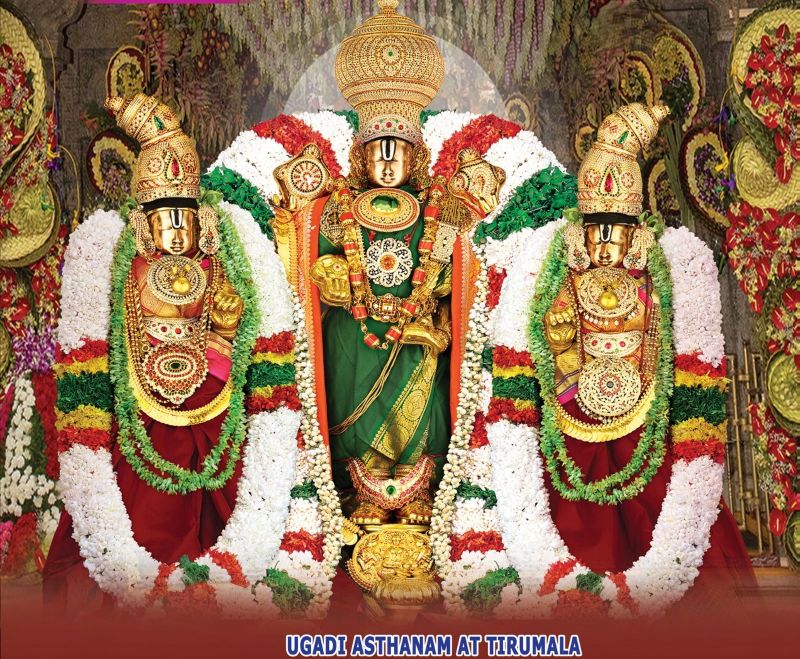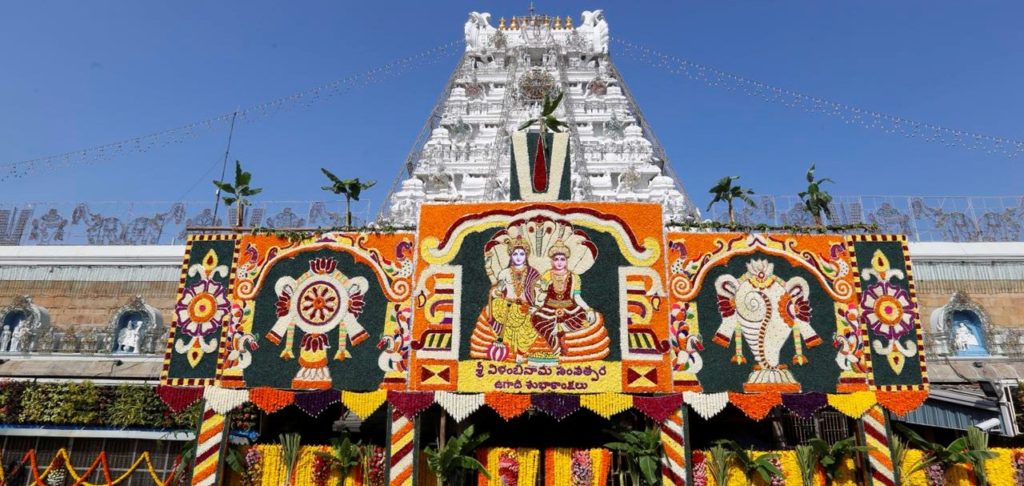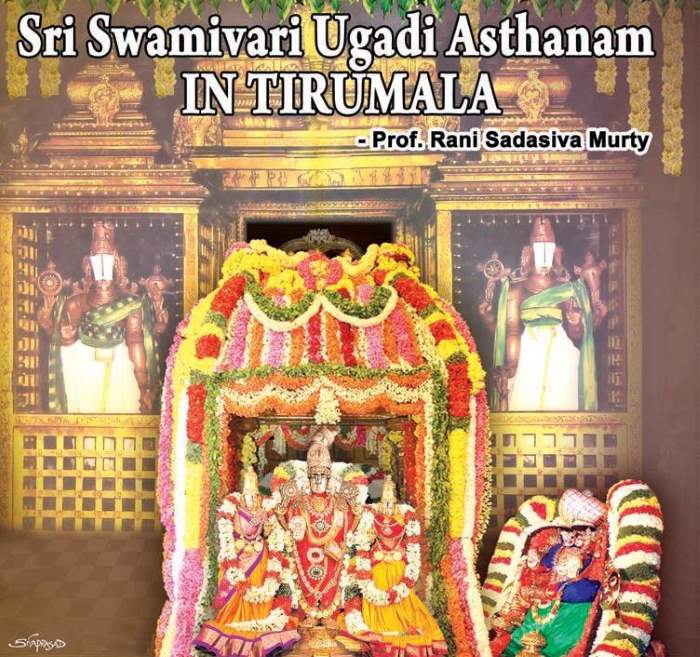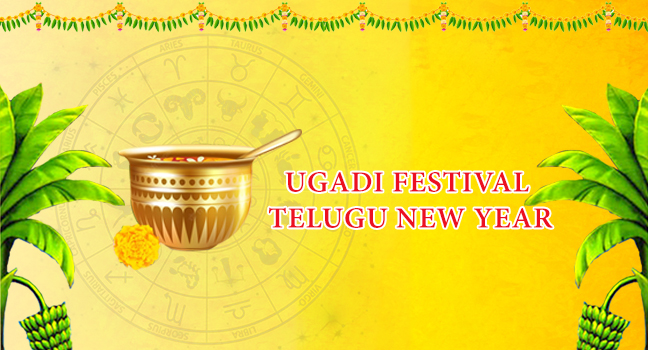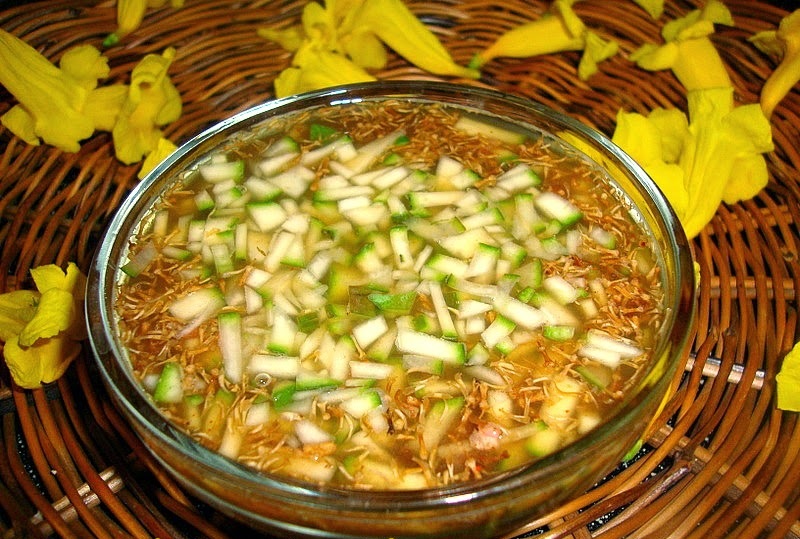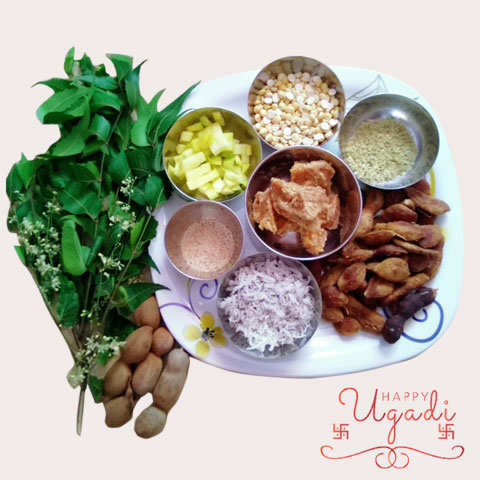Tirumala Ugadi 2025 Festival: Special Pujas and Events Sri Maha Vishnu while descending on our planet from Vaikunta brought with him beautiful mountains, valleys and water bodies. In addition, he brought along his chief attendant Sri Garuda and other retinue. He has blessed Telugu land with his choice of place and made Tirumala as Vaikunta Read More
Tag: Ugadi
Ugadi or Yugadi, also known as Samvatsarādi (meaning “beginning of the year”), is New Year’s Day according to the Hindu calendar
Celebrations at Tirumala – Ugadi 2025
Tirumala Ugadi 2025 Festival: Special Pujas and Events Sri Maha Vishnu while descending on our planet from Vaikunta brought with him beautiful mountains, valleys and water bodies. In addition, he brought along his chief attendant Sri Garuda and other retinue. He has blessed Telugu land with his choice of place and made Tirumala as Vaikunta Read More
Ugadi – Beginning of Season
Ugadi The word Yugadi or Ugadi is derived from the Sanskrit words Yuga (age) and Aadi (beginning) and it refers to the commencement of a new age. Ugadi or Samvatsaradi is the New Year’s Day for the people of Andhra Pradesh, Telangana, Karnataka and Maharashtra States in our country. It is celebrated with all festivity Read More
Ugadi Asthanam in Tirumala
Ugadi Asthanam Ugadi Asthanam is the first of all kinds of festivals and celebrations offered to Sri Tirumala Sri Venkateswara Swami at Tirumala for the full length of a year. This takes place on the first day of the Chaitra masa according to Lunar Calendar. The Daily ritual of Srivari Koluvu which is performed every Read More
Ugadi – Telugu New Year
UGADI ‘U’ means Joy, Shiva and Vishnu. ‘Ga’ means movement and acquisition. Time will move on with the command of Lord Srimannarayana. The Chakra (wheel) in the hands of the Lord is Kalachakram – Time wheel. The Lord said in Gita “I am solely responsible for Shrusthi, Sthithi, Laya (Creation, Existence and Destruction) of the Read More
Ugadi Festival – New Year
Ugadi – New Year for most of the states in INDIA Seasons change. So are the accomplishments that seasons give to us. Because of variations, nature is always juvenile. The trees which shed their leaves in winter, sprout new leaves in spring and flourish with dexterity. Of all the seasons, spring is the most invigorating Read More
Ugadi Chutney
Ugadi Pachhadi/ Ugadi Chutney is also known by some other names such as UgadiGojju, Ugadi Rasayana. On the day of the Ugadi festival after taking the bath, the Chutney is prepared and offered to God as naivedya. Then it is taken as the first intake of the day with the fond hope that the forthcoming Read More
